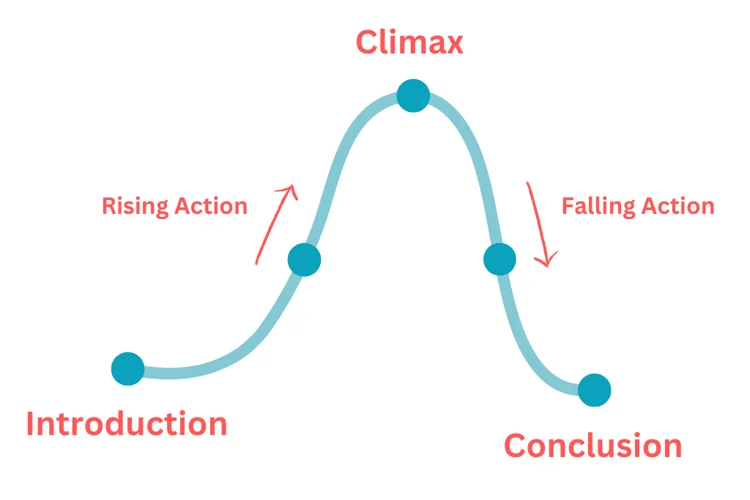Continuous writing is a type of composition where you write a longer story or essay
based on a given topic. It is an important part of the Primary 6
PSLE English examination, testing how well you can express your ideas clearly and
engagingly.
Unlike situational writing, continuous writing gives you more freedom to use your
imagination within the scope of a given topic. At the same time, it challenges you
to show good language skills and understand how to organise your story logically and
effectively.
To do well, you need to plan carefully, stay focused, manage your time wisely, and
craft a story that is both relevant and interesting. In this article, we’ll share
six tips to help you write great compositions and excel in your continuous writing.

PSLE Continuous Writing Format
Continuous writing is part of Paper 1: Writing, which consists of two sections:
- Situational Writing (14 marks)
- Continuous Writing (36 marks), contributing to 25% of your total score.
For the continuous writing section, you will be required to:
- Write a composition of at least 150 words.
- Use three pictures provided in the question paper to guide your story. You must use at least one picture in your composition, but you are free to use more.
- Stick to the theme specified in the question.
Your writing will be graded on how well it fits the topic, how your ideas are organised, your use of language, and how interesting it is for the reader.
Tips for Continuous Writing in PSLE
1. Read the Question Carefully
Before you start writing, take the time to understand the theme and carefully examine the pictures provided. Ask yourself:
- What does each picture show? Look closely at the details, such as objects, actions, or settings that could hint at a story.
- What emotions or messages do the pictures convey? Do they suggest excitement, danger, happiness, or something unexpected?
- How can I combine one or more pictures to create an interesting plot? For example, could a picture of a bicycle and a bridge lead to a story about an adventure or a challenge?
By fully understanding the question from the start, you can avoid unnecessary mistakes and save time by not needing to rewrite your story later.
2. Plan Your Plot
A well-planned story keeps readers engaged. Use this simple structure:
- Introduction: Start your story with an exciting beginning. Describe where the story happens and who the main characters are.
- Rising Action: Add some events that build up to a problem or challenge. These should make the story more interesting and keep readers curious about what will happen next.
- Climax: This is the most exciting part of the story! It’s when the biggest problem or challenge happens, and the characters must face it.
- Falling Action: After the exciting part, show how the characters solve the problem or deal with what happened. Things should start calming down here.
- Conclusion: Finish your story by wrapping everything up. Explain what happens to the characters and how the story ends. Leave your readers feeling satisfied.
Before you start writing, jot down your ideas for each part of the story curve to
stay organised. Think about the challenge(s) your main character will face and how
they will solve the problem or overcome the challenge.
Spend about 5 minutes to plan your story. This will help you stay organised and make
your story flow better.

3. Use Descriptive Language
Descriptive language makes your story more interesting and helps the reader imagine it clearly. It also allows you to showcase your vocabulary by using a variety of expressive words and phrases.
- Paint a picture with words: Use words that create a vivid image in the reader's mind rather than simply telling them what happened. For example, instead of saying, “It was a sunny day,” write, “The golden rays of the sun warmed my face as I stepped out.”
- Engage the senses: Use details to describe what your characters see, hear, smell, and feel. For instance, instead of saying, “She was scared,” write, “Her hands trembled, and her heart raced as she heard footsteps behind her.”
By adding these rich details, your story will feel more real and immersive for the reader.
4. Add Dialogue
Dialogue makes your story more lively and helps to show your
characters’ personalities. It also shows your ability to write in different ways.
For example, instead of narrating, “John was scared,” you could write: John whispered,
trembling, “I don’t think we should go in there.”
Using dialogue adds variety to your writing and makes it more engaging for the reader.
5. Stay Relevant
Ensure that your story is appropriate for the theme and uses at least one picture provided. The theme gives you a clear direction for your story and sets the tone of the plot. For example:
- If the theme is “An Unexpected Event”, and one of the pictures shows a bicycle, your story could be about a surprising moment during a cycling trip, such as discovering a hidden trail or encountering an unusual animal.
Answering the question prompts helps you stay focused on the plot. Avoid adding
ideas that stray from the theme or pictures, as this could confuse the reader and
make your story harder to follow.
After writing, take time to review your story and make changes if needed to ensure
it stays clear and on track.

6. Avoid Common Pitfalls
- Don’t rush. Give enough detail to make your story interesting.
- Check your grammar and spelling. Simple errors can affect your score.
- Keep to the word count. Aim for at least 150 words but avoid unnecessary repetition.
- Don’t lose track of time. Make sure you spend enough time planning, writing, and reviewing your story to ensure it’s complete and well-written.
Conclusion
Continuous writing in the PSLE is your opportunity to shine by creating a story that is both
well-written and memorable. By following these six tips – reading the question carefully,
planning your plot, using descriptive language, adding dialogue, staying relevant, and
avoiding common pitfalls – you can craft a structured and engaging composition.
Remember, practice is key. The more you write and refine your skills, the more confident
you’ll feel on exam day to deliver a story that captivates the reader and scores well. Good
luck!
English and Future Success
Research shows that strong English skills go far beyond the classroom, playing a key role in
university1 and career success2. Better English proficiency is not just about grammar and
vocabulary; it provides a crucial stepping stone for achieving life goals.
At Creative Campus, we believe that nurturing strong English skills lays the groundwork for your child’s future success. Our rigorously developed in-house curriculum not only seeks to enhance language proficiency but also fosters critical thinking, creativity, and confidence. Through engaging lessons and dedicated guidance, we equip students with the tools they need to excel academically and beyond. Ready to unlock your child’s full potential? Contact us today to book a trial class and see how we can make a difference!

About Mrs Elizabeth Yeo

CHIEF OPERATING OFFICER
CHIEF FINANCIAL OFFICER
DIRECTOR OF PROGRAMME (PRIMARY LEVELS)
Frequently Asked Questions (FAQ)
Common PSLE continuous writing topics include themes like "An Unexpected Event," "A Lesson Learnt," "Overcoming a Challenge," "A Time I Felt Proud," and "Helping Someone in Need." These themes encourage creativity and are relatable for primary school students.
Start by practising with past papers or sample topics and writing regularly to improve. Focus on planning your story, creating clear introductions, exciting climaxes, and strong conclusions. Share your work with teachers or parents to get helpful feedback. With consistent practice, you’ll improve and be ready to excel in the PSLE!
Continuous writing means writing a full story or essay without stopping. It follows a clear flow from the beginning to the end, with all the ideas connected.
To write well, plan your story, use descriptive words and phrases, stay on topic, and include dialogue between characters. Practise often to get better at organising your ideas and writing clearly.
Situational writing is short and practical, like writing a letter or email, and follows specific rules. Continuous writing gives you more freedom to create a longer, more engaging story or essay using a theme and pictures.
The purpose of continuous writing is to test your creativity, language skills, and how well you can organise your ideas into a clear and interesting story.
Continuous writing uses full sentences, details, and flows like a story. Note form is short, using bullet points or phrases, and doesn’t have full sentences.
Yes, paragraphs are very important. They help to organise your story and make it easier for the reader to follow.
A piece of continuous writing is called a composition, essay, or story.
The three main types of writing are narrative (stories), expository (explaining things), and argumentative (giving your opinion). Continuous writing is usually a narrative.
Cohesive writing uses words like "and," "but," and "then" to connect sentences. Coherent writing makes sure all the ideas in your story are in the right order and easy to understand.
Start by reading other stories to get ideas. Then pick a topic, plan your story, and write. Work on getting better step by step, starting with organising your story and adding details like descriptions and dialogue.
To do well, make sure you understand the topic, take time to plan your story carefully, and use descriptive words and phrases to make it engaging. Keep your writing relevant to the topic. Practise regularly and seek feedback from your teachers or parents to improve.
In writing, "continuous" means the ideas are connected and flow smoothly, creating a complete and clear story or essay.
